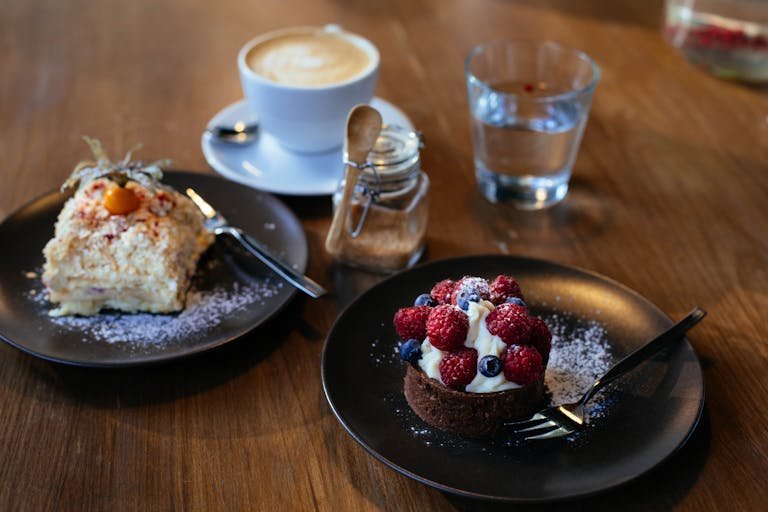Latte art has become a celebrated aspect of coffee culture, and for good reason. Creating intricate designs in your cup requires not only skill but also the right kind of milk. Whether you’re an aspiring home barista or a seasoned professional, understanding which milk works best for latte art can elevate your coffee game to new heights. In this comprehensive guide, I’ll take you through everything you need to know about selecting the best milk for latte art, from in-depth comparisons to practical tips and techniques.
Understanding the Science Behind Milk Froth
Milk froth is essential for creating beautiful latte art. But what exactly makes milk froth so special? When you steam milk, you’re incorporating air into it, creating a microfoam that gives your lattes their velvety texture.
The Role of Proteins and Fats
Proteins and fats in milk play a crucial role in froth formation. Proteins stabilize the foam, while fats add richness. Regular cow’s milk typically has a good balance of both, making it a popular choice for latte art.
Temperature Matters
Steaming milk to the right temperature (between 150-155°F) ensures optimal froth quality. Overheating can scald the milk, ruining its texture and flavor.
The Importance of Freshness
Fresh milk steams better and creates a more stable microfoam. Always use fresh milk for the best results.
Dairy Milk: The Classic Choice for Latte Art
Dairy milk has long been the go-to option for baristas and a good reason.
Whole Milk
Whole milk offers the perfect balance of proteins, fats, and sugars, creating a rich and creamy microfoam. It’s ideal for creating intricate latte art designs.
Skim Milk
Skim milk froths easily due to its higher protein content but lacks the richness of whole milk. It’s a good option for those looking to cut down on calories.
Comparing Brands
Within dairy milk, different brands can offer varying frothing qualities. Popular brands like Horizon Organic and Organic Valley are often praised for their consistency and flavor.
Plant-Based Milk Revolution: A Comprehensive Guide
With increasing interest in plant-based diets, more people are exploring non-dairy milk for their lattes.
Almond Milk
Almond milk is a popular choice due to its subtle nutty flavor. Brands like Almond Breeze and Blue Diamond offer good frothing capabilities, although they may not be as creamy as dairy milk.
Oat Milk
Oat milk has gained popularity for its creamy texture and ability to froth well. Brands like Oatly and Planet Oat are favorites among baristas for their consistency and taste.
Soy Milk
Soy milk offers a good balance of protein and fat, making it a decent alternative to dairy milk. Silk and Westsoy are reliable brands known for their frothing quality.
Mastering Latte Art with Different Milk Types
Creating stunning latte art requires a combination of skill and the right type of milk.
Steaming Tips for Dairy Milk
For whole milk, aim to create a velvety microfoam by incorporating air slowly. Skim milk requires a bit more air to achieve a stable foam.
Steaming Tips for Plant-Based Milk
Plant-based milk can be trickier to froth. For almond milk, keep the steaming wand just below the surface to incorporate air gradually. For oat milk, aim for a slightly higher temperature to achieve a creamy texture.
Adapting Pouring Techniques
Different milk types require slight adjustments in pouring techniques. Dairy milk allows for more intricate designs, while plant-based milk may require a steadier hand and slower pour.
Tips and Tricks for Perfect Milk Froth
Achieving perfect milk froth takes practice and attention to detail.
Use Cold Milk
Starting with cold milk gives you more control over the steaming process, allowing for better microform.
Clean Your Equipment
Residue can affect the quality of your froth. Always clean your steaming wand and jug after each use.
Practice Makes Perfect
Consistent practice is key. Experiment with different milk types and techniques to find what works best for you.
Taste Profiles of Different Milks
The taste of your latte is just as important as the art on top.
Dairy Milk
Whole milk offers a rich and creamy flavor, while skim milk is lighter and less indulgent.
Plant-Based Milk
Almond milk adds a subtle nuttiness, while oat milk is slightly sweet and creamy. Soy milk has a neutral flavor, making it a versatile option.
Adding Flavor
Consider adding a touch of vanilla or cinnamon to enhance the flavor of your milk without overpowering the coffee.
Texture Analysis
The texture of your milk froth can significantly impact your latte art.
Creaminess of Dairy Milk
Whole milk creates the creamiest microform, perfect for detailed designs. Skim milk, while frothy, lacks the same richness.
Plant-Based Milk Variations
Oat milk often provides a creamy texture similar to whole milk, while almond milk may be thinner and less stable.
Enhancing Texture
Consider adding a small amount of dairy milk to your plant-based options to improve stability and texture.
Sustainability Factors
Sustainability is an important consideration for many coffee enthusiasts.
Environmental Impact of Dairy Milk
Dairy farming has a significant environmental footprint, including greenhouse gas emissions and water usage.
Plant-Based Alternatives
Plant-based milks generally have a lower environmental impact. Oat milk, for example, uses less water and land compared to almond milk.
Making Sustainable Choices
Choose brands that prioritize sustainability, such as those using organic farming practices and eco-friendly packaging.

Milk Substitutes and Innovations
Beyond the common options, several emerging milk substitutes are worth exploring.
Pea Milk
Pea milk, like Ripple, offers high protein content and good frothing ability, making it a viable alternative for latte art.
Cashew Milk
Cashew milk is creamy and froths well, although it may lack the stability of other options.
Rice Milk
Rice milk is thinner and may not froth as well, but it’s a good option for those with nut allergies.
DIY Milk Options
Making your milk alternatives can be a fun and rewarding experience.
Homemade Almond Milk
Blend soaked almonds with water and strain through a nut milk bag for a fresh and flavorful alternative.
Homemade Oat Milk
Combine oats with water and blend, then strain to create a creamy and eco-friendly milk option.
Experimenting with Additives
Consider adding a touch of sweetener or vanilla extract to enhance the flavor of your homemade milk.
Latte Art Techniques and Tips
Creating beautiful latte art requires practice and patience.
Milk Steaming Mastery
Achieving a perfect microfoam is the first step. Practice steaming different kinds of milk to understand their unique characteristics.
Pouring Techniques
Pour slowly and steadily, starting with a high pour to mix the milk and espresso, then lowering the jug to create intricate designs.
Common Issues
If your latte art isn’t turning out as expected, consider adjusting your steaming technique or experimenting with different milk types.
Read Also: Discovering the Symphony of Flavors in Cold Brew Coffee
Closing Words
Choosing the best milk for latte art is a journey that involves experimentation and practice. Whether you prefer dairy milk or plant-based alternatives, understanding the unique properties of each can help you create stunning and delicious lattes. I encourage you to explore different options and techniques to find what works best for you. If you’re ready to take your latte art skills to the next level, consider booking a session with one of our expert baristas. Happy brewing!






